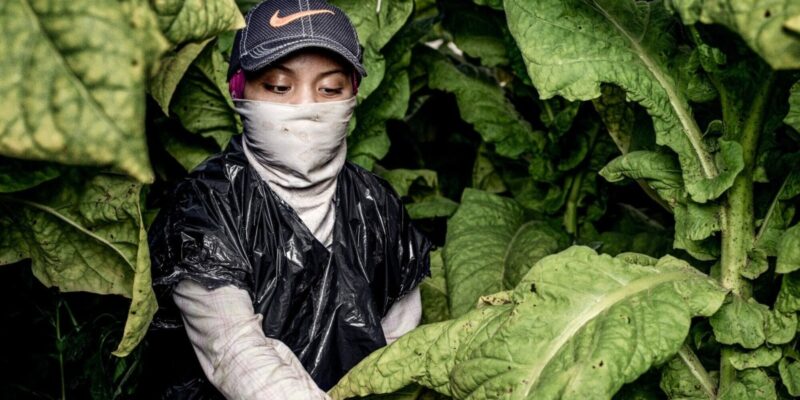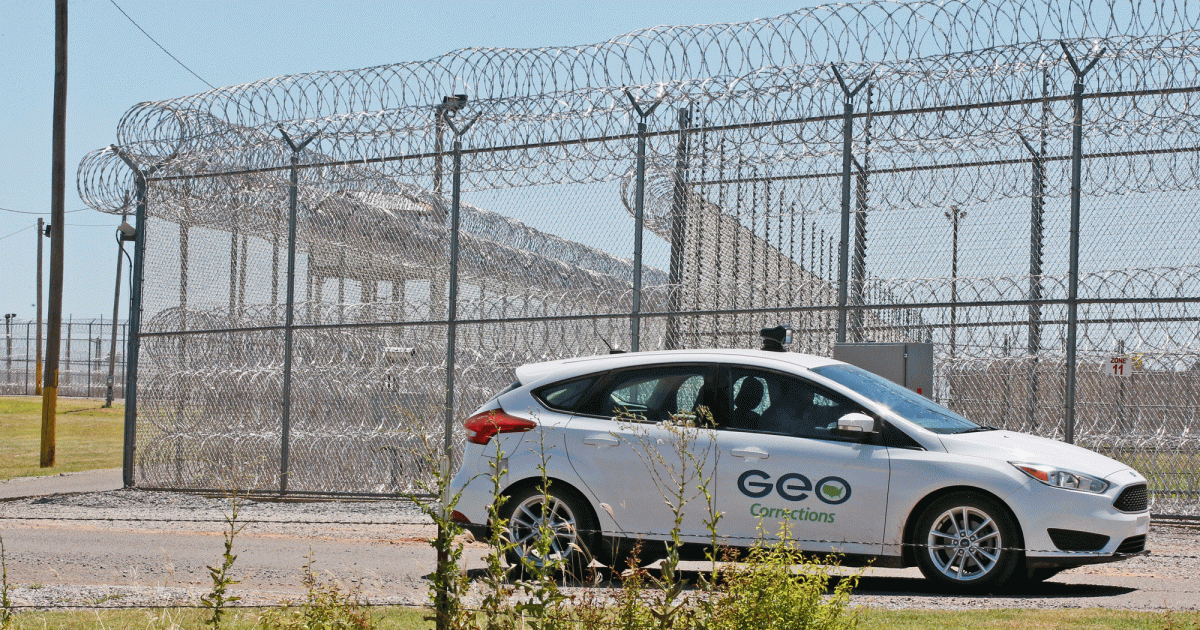
This story was originally published by the Food and Environment Reporting Network and is reproduced here as part of the Climate Desk collaboration.
If you’ve eaten a burger and fries recently, there’s a chance that the potatoes were picked by middle schoolers, working through the school day in a field in Idaho. The steer that became the beef patty may well have been killed at a slaughterhouse where teenagers work, and the bone saws used to process the meat could easily have been cleaned by a 13-year-old, wearing a bulky hard hat and oversized gloves. It’s also quite possible that the burger was grilled, flipped and assembled by a child working at McDonald’s on a school night, far later than federal law allows.
This sort of child labor—culled from thousands of examples in U.S. Department of Labor investigations—has been mostly illegal in the U.S. since the 1930s, but that hasn’t stopped a surprising number of companies from engaging in it. In February, the department announced that the nation is experiencing a sharp rise in child labor violations across all industries; since 2018, the agency has documented a 69-percent increase in children who were employed illegally.
The vast majority of employers committing this wave of violations have something in common: they grow, package, deliver, cook, sell and serve the nation’s food.
A FERN analysis of investigation data released by the Department of Labor’s Wage and Hour Division (WHD)—which is tasked with enforcing federal child labor laws—found that more than 75 percent of recent violations were committed by employers in the food industry. The agency uncovered more than 12,000 child labor violations in the nation’s food system—out of 16,000 total violations across all industries—between Jan. 1, 2018 and Nov. 23, 2022, the most recent date for which data were publicly available. Investigators found minors working illegally at vegetable farms in Texas and Florida, at dairy farms in Minnesota and New Hampshire and at poultry plants in Alabama and Mississippi. Children are involved in every step of the food supply chain, working illegally from farm to table.
Restaurants were by far the worst offenders. More than 64 percent of all the violations were committed by food service employers. Culprits ranged from regional pizza chains to high-end restaurants, and certain fast food chains were well represented. McDonald’s franchises, for instance, committed 8.7 percent of the violations in the WHD data. The National Restaurant Association did not respond to multiple requests for comment, and McDonald’s declined to comment for publication.
Supermarkets and other food and beverage stores were well represented, too, responsible for 7.7 percent of the violations. In one particularly egregious example, from 2021, a 16-year-old supermarket worker in Clarksburg, Tennessee, was tasked with cleaning out a meat grinder, even though federal law prohibits employers from having minors clean or operate them. As the boy reached into the machine, the grinder switched on and ripped off half of his arm.
Most jobs that workers under the age of 18 do in this country are not considered child labor. The United Nations’ International Labour Organization defines child labor as work that is mentally or physically dangerous for children, interferes with their schooling or both, and U.S. law largely reflects that definition. For the most part, businesses are prohibited from hiring children younger than 14. Fourteen- and 15-year-olds can only work three hours a day on school days, and they can’t legally work during school hours, or take early morning or night shifts. Children under the age of 18 are barred from operating a range of hazardous machinery, like band saws and meat choppers.
Child labor is notoriously difficult to document, and while these data provide meaningful insight into industries that commit child labor violations, they also provide insight into the limitations of the agency’s investigations. Underfunded and understaffed, WHD is tasked with regulating more than 11 million employers with only about 800 investigators. Because of this, the agency mostly investigates companies it receives complaints about—and in many industries, labor violations are chronically underreported.
“What you’re seeing [in this data] is where we go,” a senior Wage and Hour Division official told FERN, referring to the fact that complaints drive the agency’s investigations.
Labor abuses in the restaurant industry frequently go unreported. In a report released by the UCLA Labor Center last year, more than a third of fast food workers surveyed said they’d kept quiet about dangerous conditions in their workplace and other issues, mostly because they were afraid they’d lose their jobs or certain shifts if they complained. And yet, the senior WHD official says, WHD investigators receive far more complaints about food service employers than other types of employers in the food system, such as farmers. “I’m sure a big part of that has to do with workers’ ability to get other jobs,” he says. While food service employers regularly retaliate against employees who speak out about labor violations, workers “could go to the restaurant across the street [for work],” he says. “So they might be more forthcoming to complain.”
The severity of the child labor violations that restaurants commit ranges widely. According to WHD officials, children often work earlier, later and longer hours than they’re supposed to, and in some cases, managers are unaware they’re breaking the law. Other violations are both deliberate and more severe. In 2020, WHD found that Manna Inc., a fast food franchise company, had hired 446 14- and 15-year-olds to work the graveyard shifts at nearly a hundred Wendy’s and Fazoli’s locations across the country. Last December, WHD fined a Chick-fil-A more than $6,000 after discovering it had illegally hired three teenagers, then paid several employees in chicken.
Teenage food service workers are often desperate for work. These are not “teenagers working [to buy] comic books or trading cards,” says Manuel Villanueva, the western regional director for the workers rights’ group Restaurant Opportunities Centers (ROC) United. “I’ve seen people manage to work three jobs just to get by, and then they have to send their kids to work.”
In Villanueva’s experience, abuses are particularly prevalent in the fast food industry, where hiring workers is outsourced to franchisees. “It’s a free-for-all,” he says. Because child workers lack seniority, he adds, they’re sometimes given dangerous jobs that other workers don’t want to do, like disposing of oil and cleaning deep fryers.
Agricultural jobs and certain food processing jobs, like meat and poultry processing, are particularly dangerous for child workers, but WHD also finds them particularly hard to investigate. Many child employees in food processing work night shifts at isolated facilities away from public view, and “that is not an industry that we are typically looking at at two in the morning,” says the senior WHD official. Farmworkers also tend to be physically isolated and routinely face workplace retaliation; many are undocumented, which can make workers all the more reluctant to speak out. Between January 2018 and November 2022, employers in food processing and agriculture collectively accounted for only about 3 percent of the child labor violations that WHD uncovered—but child labor is known to be widespread in both industries.
In February, WHD forced Packers Sanitation Services Inc. (PSSI), one of the country’s largest food safety sanitation service providers, to pay $1.5 million in civil penalties after investigators discovered the company had illegally employed over 100 children to work overnight shifts at 13 meat processing facilities. Teens as young as 13 worked the overnight shift, cleaning brisket saws and head splitters, and several child workers suffered chemical burns on the job. It was indicative of a much larger problem. In February, a New York Times investigation found that migrant child workers are routinely hired, illegally, by food processing companies, where they described feeling sick, exhausted and trapped by circumstances beyond their control.
Child labor also is commonplace in agriculture—though in many cases, it’s legal. Farmers are largely exempt from federal child labor laws, and children as young as 12 can work unlimited hours harvesting crops, provided they have their parents’ consent and they don’t miss school. As a result, hundreds of thousands of children under the age of 18 work on farms across the country. According to Human Rights Watch, children are often hired to work for 10 or more hours a day, five to seven days a week, in violation of the few federal laws that do apply. Agriculture also is the most dangerous work open to children in the United States; over half of all work-related child fatalities happen in agriculture, even though child farmworkers account for less than 5 percent of the country’s child workforce.
According to Edgar Franks, the political director for the farmworker’s union Familias Unidas por la Justicia, child farmworkers are often expected to work as quickly as adult workers, and they’re sometimes disciplined or even fired when they don’t. “There’s even pressure [for them] to go faster than experienced pickers,” he says, “because their bodies aren’t broken down yet.”
When FERN showed its findings to a dozen WHD officials, labor experts and organizers, many of them were unsurprised that child labor violations are so prevalent in the nation’s food system. In many ways, experts said, a confluence of economic trends and political decisions has made the food industry an ideal environment for this kind of exploitation.
David Weil, who served as the head of the Wage and Hour Division under the Obama administration, says the recent “explosion” of child labor violations has been a long time coming—and that he would expect these violations to be more prevalent in food-related industries.
According to Weil, the modern food industry has been shaped by several economic trends. Since the 1980s, major U.S. corporations have increasingly outsourced the hiring of employees to subcontractors and staffing agencies, which insulates them from liability. “The companies where child labor is being used, their first comment is, ‘I’m shocked that there are children working here,’” he says. “But their second comment is, ‘They’re not our employees.’”
At the same time, many employers also have had trouble hiring adult U.S. citizens, who can command better benefits and wages in the current strong job market. This apparent labor shortage has coincided with an immigration and humanitarian crisis. In the last two years, more than 250,000 unaccompanied minors have fled unrest in their home countries and sought refuge in the United States. According to multiple Times’ investigations, government agencies quickly lose track of them, and an increasing number of employers are hiring them illegally.
“It’s a little bit of chickens coming home to roost, I hate to say,” says Weil. “It’s the systemic result of all these forces coming together.”
The Department of Labor has launched an interagency task force to crack down on child labor exploitation, vowing to hold all employers accountable, including companies that hire employees through subcontractors. It also urged Congress to increase the fines that guilty employers are forced to pay; the maximum penalty for committing a child labor violation is $15,000, which WHD officials argue is far too low to deter any major corporation.
Weil is encouraged by these initiatives, but without more funding he thinks they’ll be difficult to deliver on. “You cannot adequately [provide] what the U.S. workplace needs in terms of enforcement with the amount of funding that Congress has been giving to these agencies,” he says.
House and Senate members are considering an increase in WHD’s funding and have proposed two bills that would more than triple the fines for child labor violations. In the meantime, state lawmakers across the country are moving in the opposite direction. Last month, Arkansas made it easier for employers to hire 14- and 15-year-olds, one of at least 10 states in the past two years that have introduced or passed legislation weakening child labor laws. “This is less time that they [kids] will be spending on social media, like TikTok and others,” said Republican Ohio State Sen. Jerry Cirino last month, after passing a bill that allows 14- and 15-year-olds to work later on school nights. The legislation is currently in committee.
Some labor experts hope increased unionization in the food industry could help address the problem. In an overwhelming number of child labor cases, “the direct employer is non-union,” says Debbie Berkowitz, who served as chief of staff and senior policy adviser for the Occupational Safety and Health Administration (OSHA) under the Obama Administration. “Unions make sure that this doesn’t happen.”
Unionization rates are still low throughout the food industry, but some organizers are optimistic—particularly about the young employees they work with.
“The kids of color that I work with,” says ROC United’s Manuel Villanueva, “they’re already politically educated. They’re like, no, this needs to change.”
Sonner Kehrt contributed reporting to this article.















